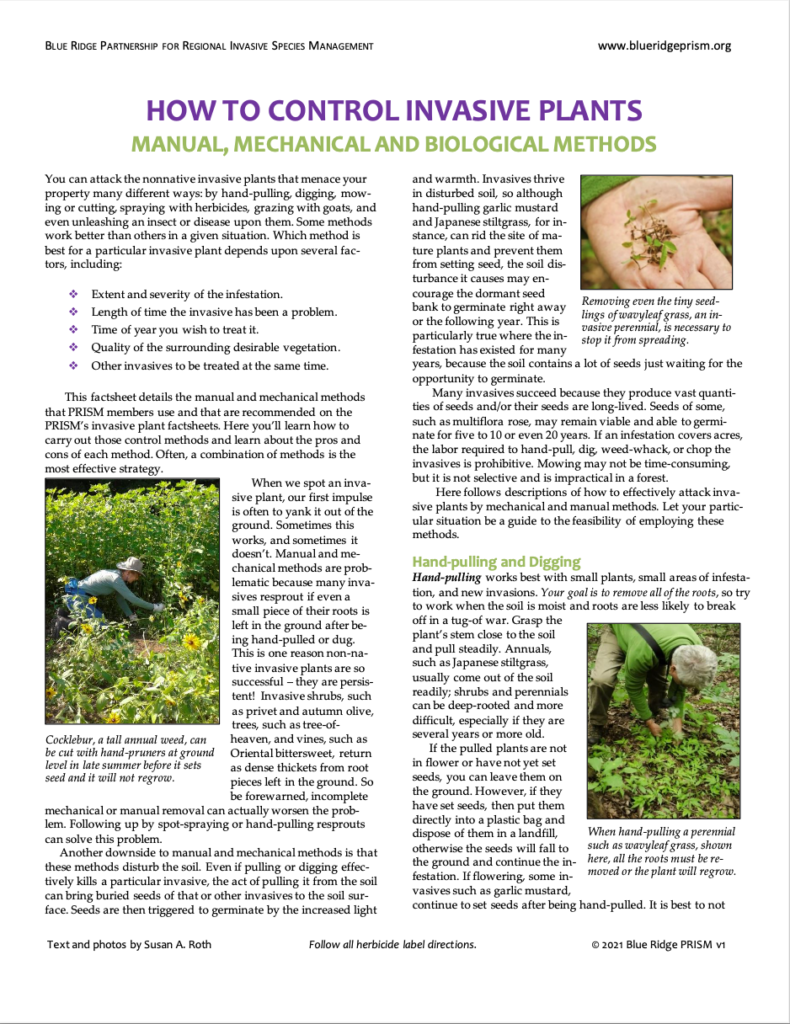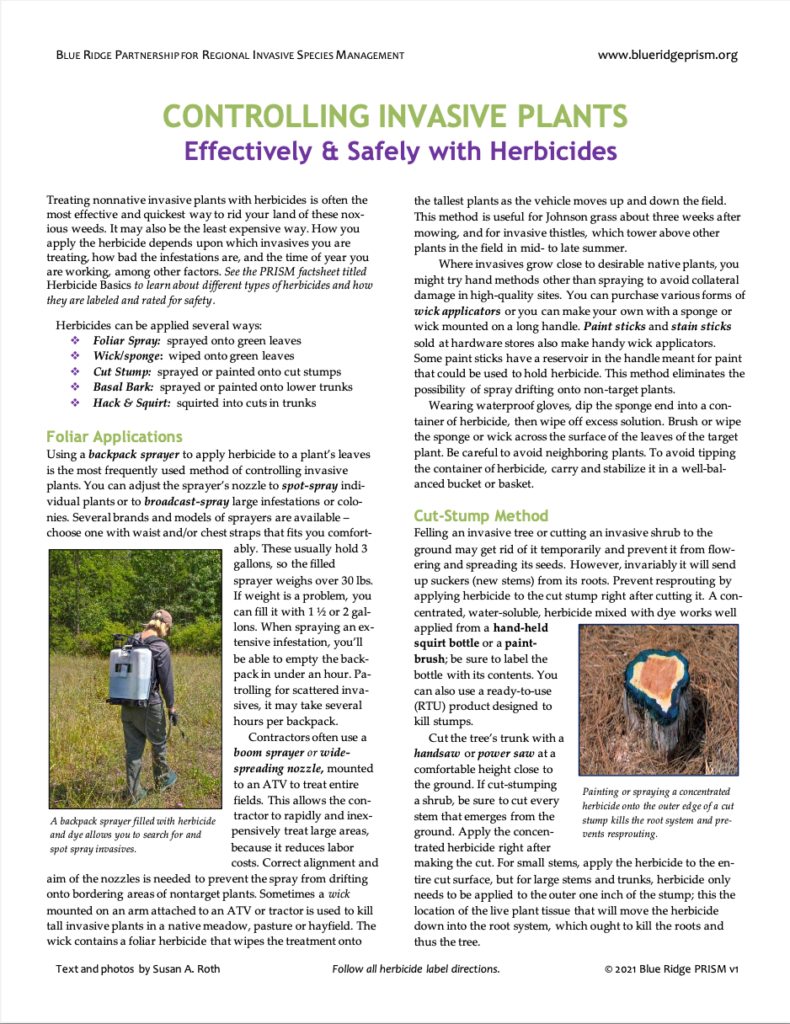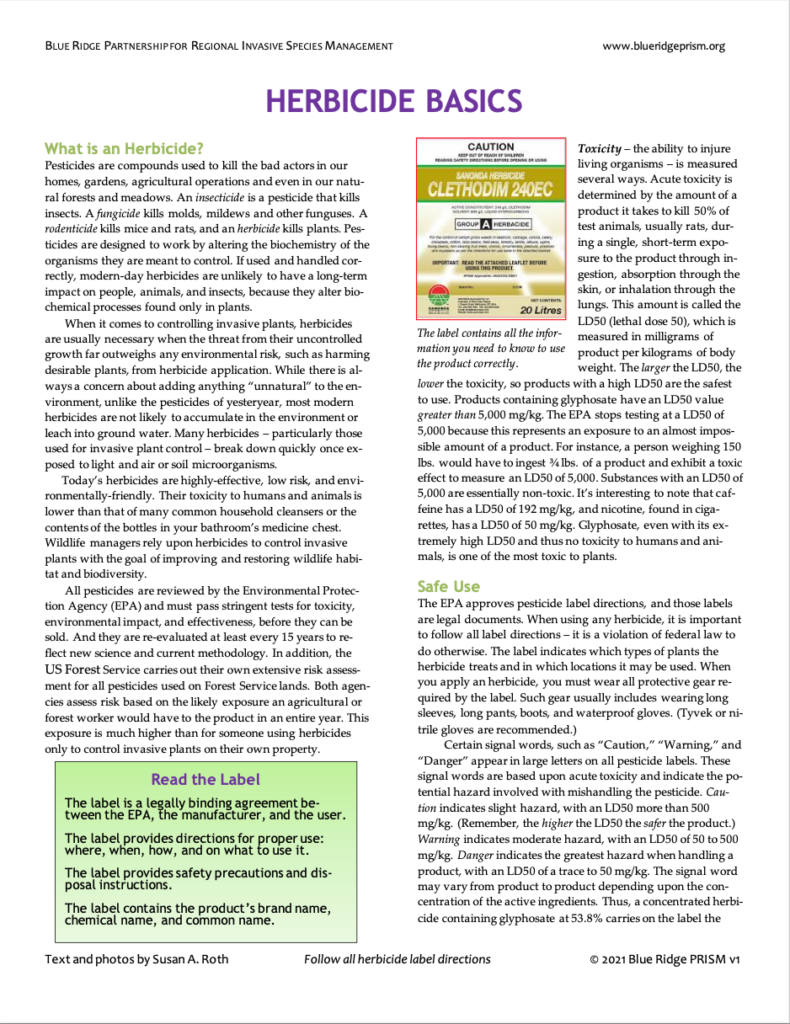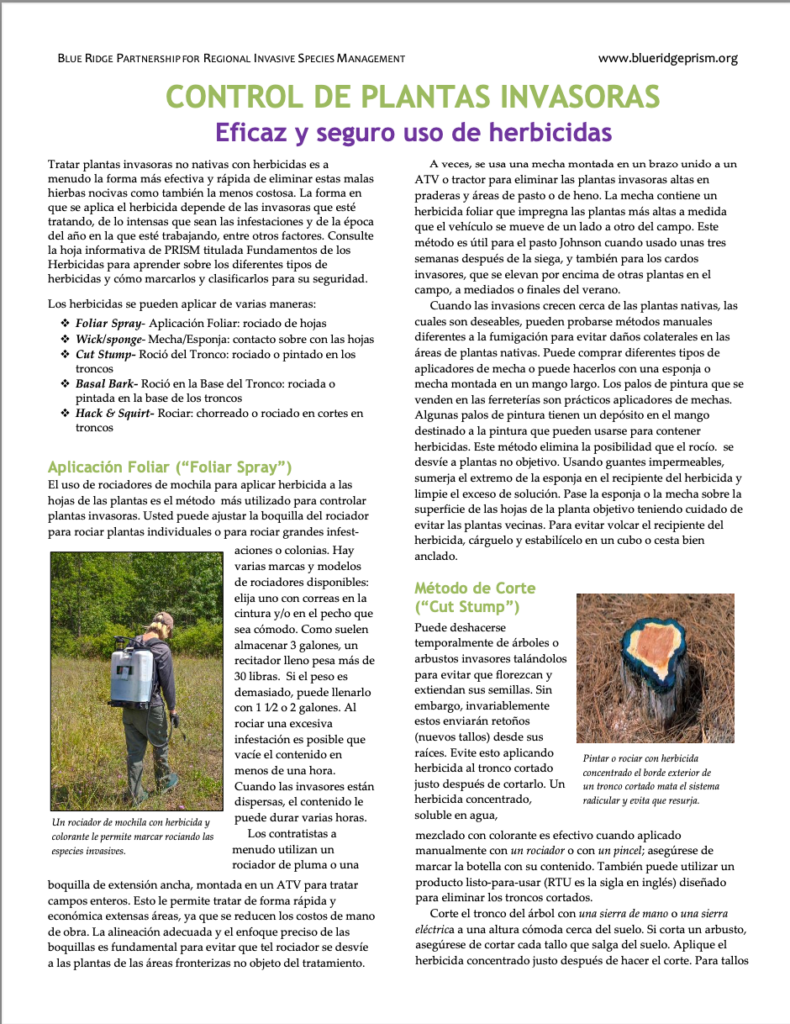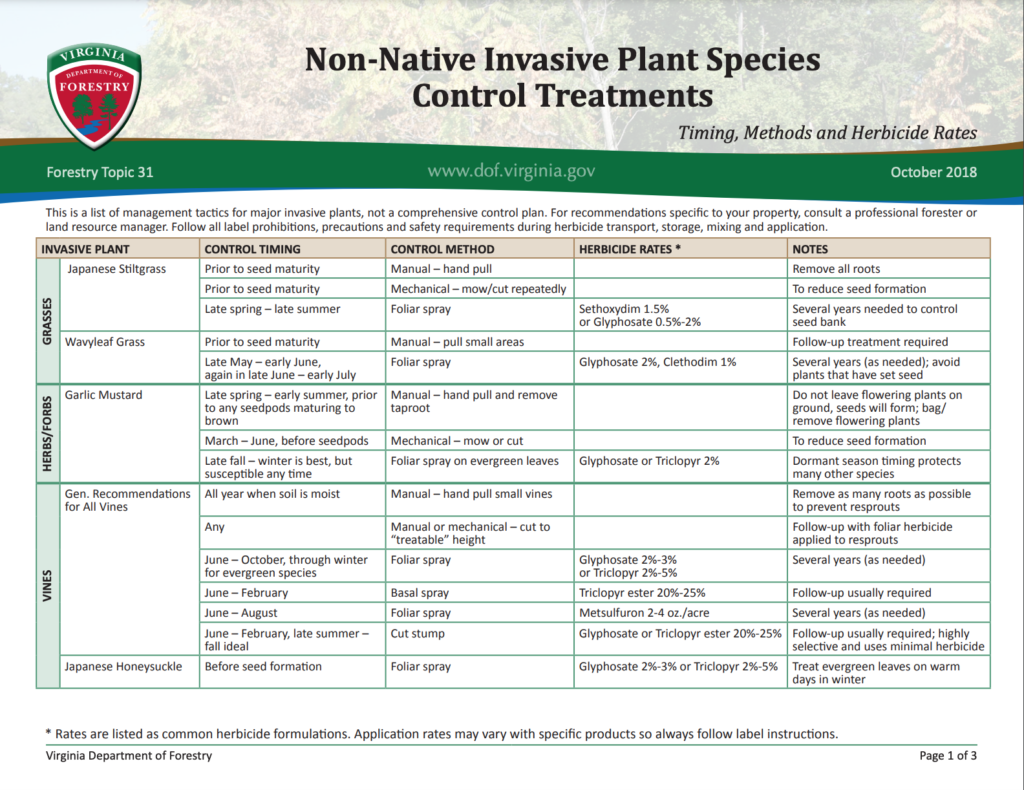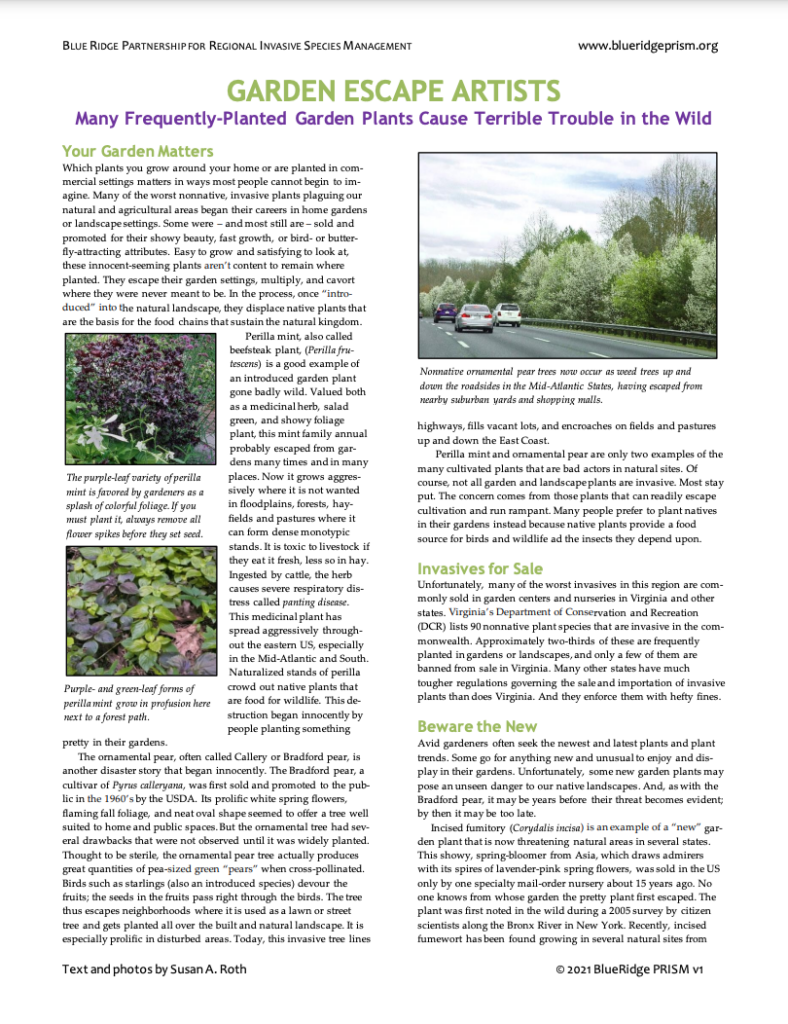Invasive Plant Fact Sheets
PRISM is targeting common invasive plants in the Blue Ridge. More than 90 nonnative plants are listed as invasive by the Virginia Department of Conservation & Recreation – these plants are established in many areas throughout the Commonwealth and clearly have the potential to become established in other areas.
Blue Ridge PRISM Fact Sheets
Click on the name of an invasive plant to go to a detailed downloadable fact sheet. Each fact sheet contains information about the plant including habitat preferences, identification, and control options.
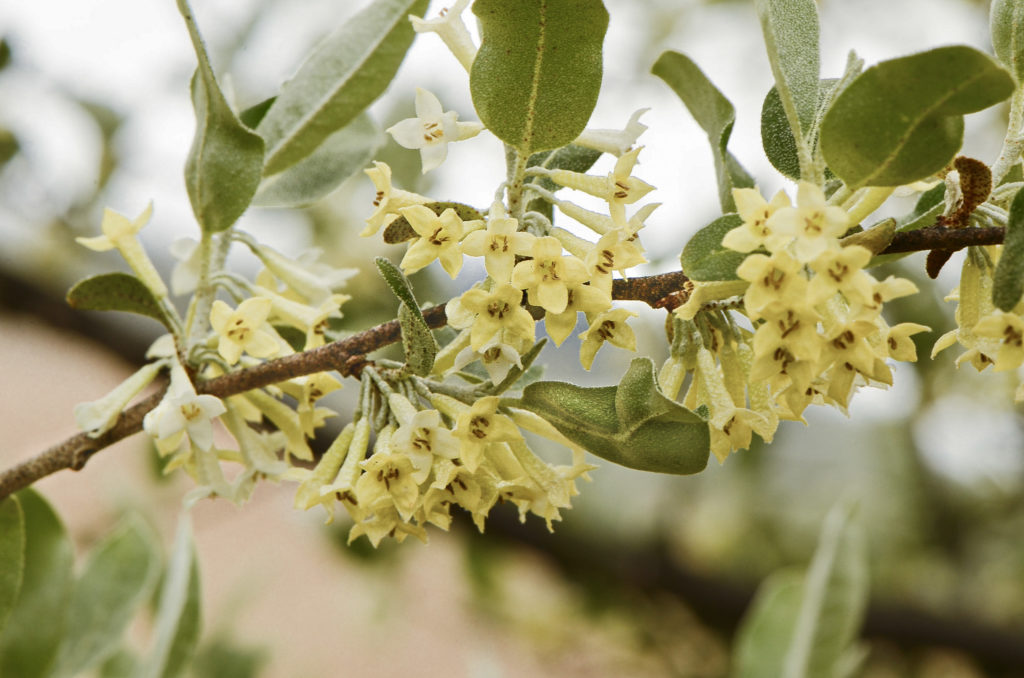
Invasive Shrubs
Multiflora Rose (Rosa multiflora)
Autumn Olive (Elaeagnus umbellata)
Chinese Privet (Ligustrum sinense)
Wineberry (Rubus phoenicolasius) *NEW*
Burning Bush (Euonymus alatus) *NEW*
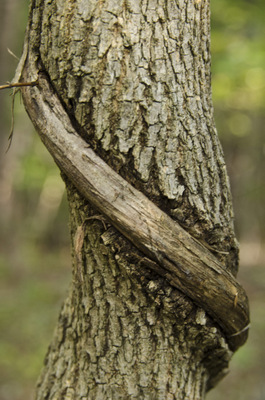
Invasive Vines
Asiatic Bittersweet (Celastrus orbiculatus)
Japanese Honeysuckle (Lonicera japonica)
Kudzu (Pueraria montana var. lobata)
Mile-A-Minute (Persicaria perfoliata)
Porcelain-berry (Ampelopsis brevipedunculata)
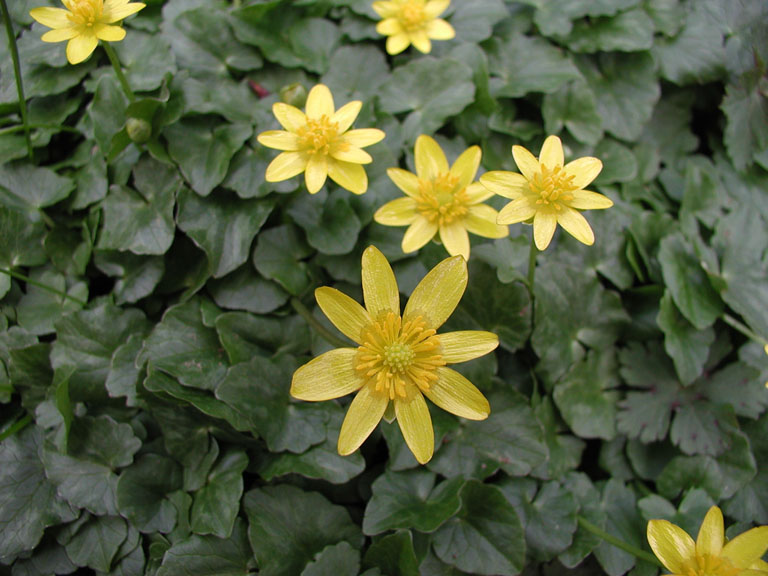
Invasive Grasses and Forbs
Japanese Stiltgrass (Microstegium vimineum)
Wavyleaf Grass (Oplismenus undulatifolius)
Garlic Mustard (Alliaria petiolata)
Lesser Celandine (Ficaria verna)
Sericea Lespedeza (Lespedeza cuneata) *NEW*

Invasive Trees
Callery (Bradford) Pear (Pyrus calleryana)
Tree-of-Heaven (Ailanthus altissima) and the insect, Spotted Lanternfly, which prefers the tree-of-heaven
Control Method Fact Sheets
If you are unfamiliar with a control method mentioned in an invasive plant fact sheet, you will find it described in detail in one of the three fact sheets listed below. The fact sheets on using herbicides are helpful when it comes to understanding how herbicides work and how to use them safely. Use these fact sheets in conjunction with PRISM’s invasive plant fact sheets:
The Virginia Department of Forestry Control Recommendation Chart offers specific recommendations on how to control invasive plants, when to control specific plants, and herbicide recommendations for chemical control.
Fact Sheets and Resources from Other Organizations
- Chocolate Vine / Fiveleaf Akebia (Akebia quinata) – Invasive.org
- Japanese Barberry (Berberis thunbergii) – Penn State Extension
- Japanese Knotweed (Reynoutria japonica) – Penn State Extension
- Burning Bush (Euonymus alatus) – Penn State Extension
- Wisteria (Wisteria sinensis & Wisteria floribunda) – Invasive.org
- Joint-head Grass (Arthraxon hispidus var. hispidus) – USDA Forest Service Weed of the Week
- Common Mugwort (Artemisia vulgaris) – UCONN Extension
- Bamboos (Phyllostachys spp. and Bambusa spp.) – Clemson Cooperative Extension
- Poison Hemlock (Conium maculatum) – Purdue Extension
- Norway Maple (Acer platanoides) – Hawkeye CWMA
- Canada Thistle (Cirsium arvense) – Purdue Extension
- Italian Arum (Arum italicum) – Cowlitz County Noxious Weed Control Board (WA)
- Fountain Grass (Cenchrus alopecuroides) – Lower Hudson PRISM
Garden Escape Artists
Many of the worst invasive plants plaguing our natural and agricultural areas began their careers in home gardens or landscape settings. Some were – and most still are – sold in nurseries and garden centers. This fact sheet discusses the problem of garden plants going wild and lists the most common invasive plants that we recommend you remove from your garden and/or do not plant.
Want to support native pollinators, birds, and other wildlife in your yard? Visit plantvirginianatives.org to learn more about native plants for the garden and backyard.

